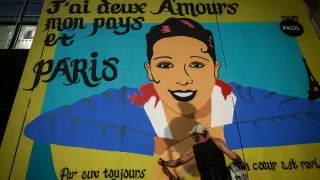August 1, 2015
Ravenna: The City of Mosaics
Kilian Melloy READ TIME: 3 MIN.
While everyone has heard of Rome-the cradle of Latin civilization that covered much of Europe and North Africa-few know of Ravenna, the petite jewel on the Italic peninsula that emerged as capital of the Western Roman Empire in 402.
Residence to Byzantine emperors a century later, Ravenna was impregnated with the power and finance to woo Arabs, Jews, Armenians, and Greeks who molded the city's character, language, and cuisine into all that is reflected outside its magnificent mosaics.
Ravenna and its surroundings have inspired numerous historical figures like Irish playwright Oscar Wilde, US-born writer T.S. Eliot, and English poet Lord Byron. A tug of war between Florence and Ravenna still wages over the body of Dante Alighieri, who spent his last days there.
If you have three days or three hours, Ravenna promises to inspire you too with more than mosaics and monuments, as you catch some golden rays at a seaside resort or dance your heart out in a nearby club.
Perhaps you prefer the calm of the Po Delta Park for some bird watching. Definitely pack a piadina (the local sandwich) and a bottle of Sangiovese for an inspiring lunch.
Piecing It All Together
Ravenna's 1,500-year-old churches undoubtedly boast the most exquisite Byzantine mosaics outside Turkey, but there is a missing tile to this puzzle; that is, why Ravenna? So, let's piece it all back together.
By the 5th century AD, the foundation of the Roman Empire had cracked in two. The shattered Western Roman Empire had been centered in Rome; while the shining Eastern Roman Empire selected Byzantium as its capital-later named Constantinople and, then, Istanbul.
Meanwhile, Ravenna replaced Rome briefly as the capital of the fractured Western Roman Empire. But in the 6th century, the city was conquered by the Eastern Roman Empire, which infused the city with Byzantine architecture, religion, art, and culture.
For this reason, Ravenna's mosaics reflect the abstract decorative styles of the Byzantine Empire rather than the realism of Roman stone carpets. Moreover, the mosaics of Ravenna not only adorn floors but also entire walls and ceilings, with glass tiles set in gold and positioned to shimmer in the sunlight.
More Than Mosaics
Pialassa Baiona: Canoe through a brackish lagoon of shallow ponds connected by canals and dotted with old hunting lodges and flocks of migratory birds.
San Vitale Pine Forest: Horseback ride through ancient woodlands that date back to Byzantine emperors.
Furlana Valley: Don't forget your binoculars when you visit this sanctuary of flamingos and spoonbills in the southern Comacchio valley.
Oasis Punte Albarete: Trail through underwater meadowlands and a submerged forest that provides refuge to assorted species of rare birds.
Ortazzo & Ortazzino: Go completely wild in the uncontaminated wetlands of this rich biodiversity.
Comacchio: Stroll along the canals of "little Venice," the enchanting lagoon town.
Kilian Melloy serves as EDGE Media Network's Associate Arts Editor and Staff Contributor. His professional memberships include the National Lesbian & Gay Journalists Association, the Boston Online Film Critics Association, The Gay and Lesbian Entertainment Critics Association, and the Boston Theater Critics Association's Elliot Norton Awards Committee.

 Copyright Uomo Moderno Magazine. For more articles from Uomo Moderno visit
Copyright Uomo Moderno Magazine. For more articles from Uomo Moderno visit 




